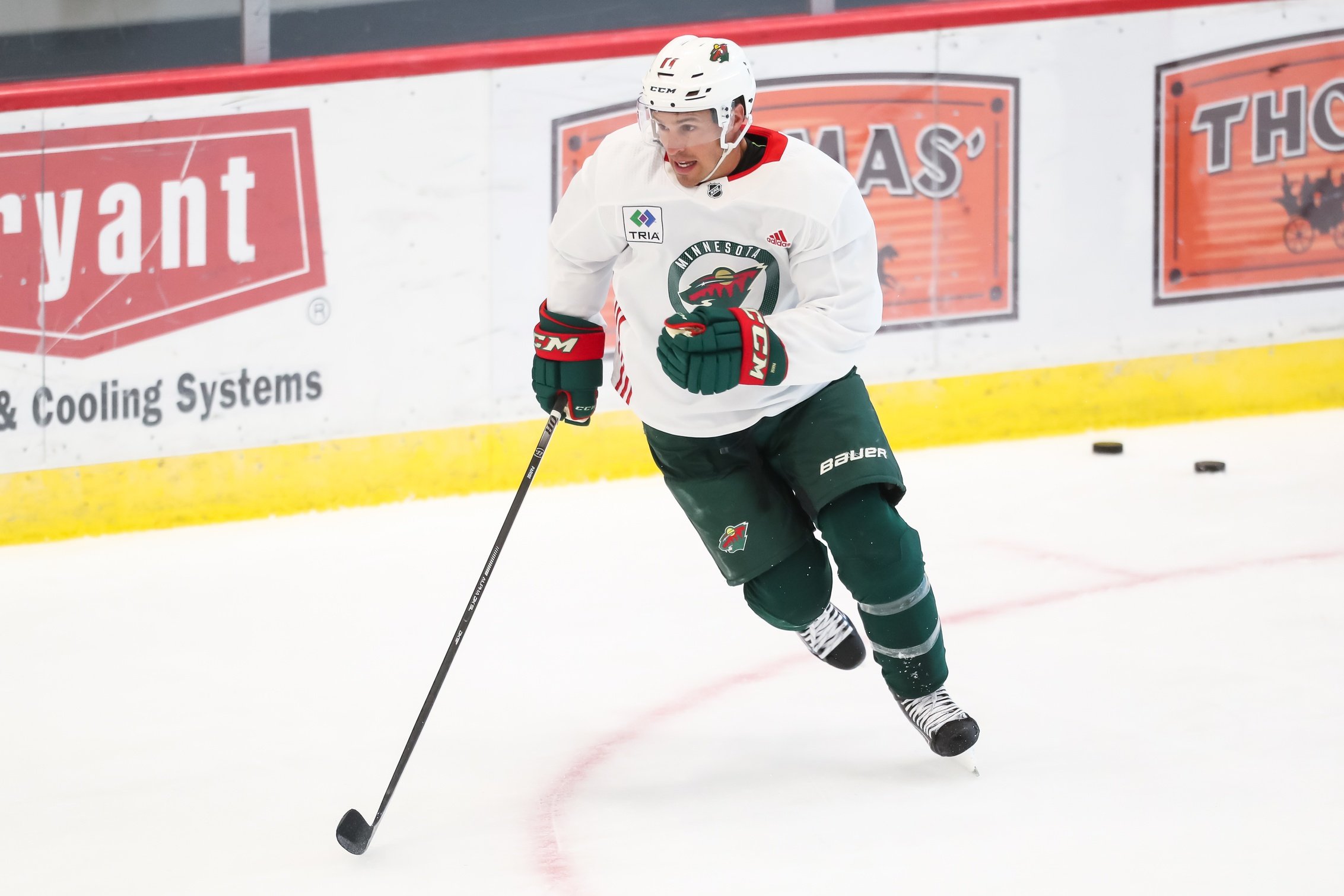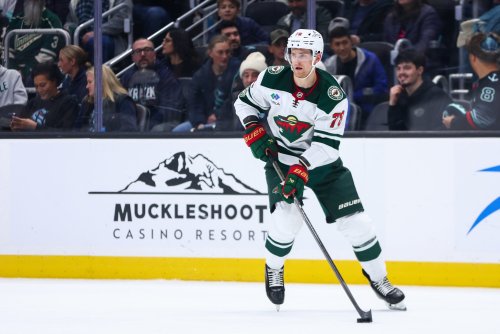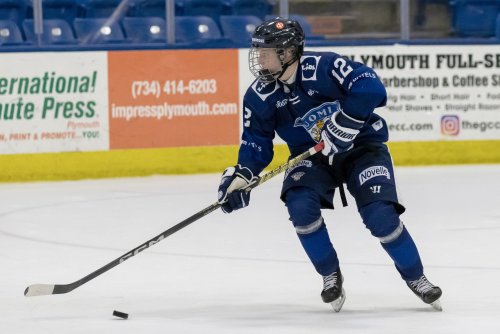
Dec. 25 was two weeks ago, but it feels like the week before Christmas in the State of Hockey. Minnesota Wild fans are searching through beat writer Twitter feeds the same way a kid looks in closets to get a peek of their Christmas presents. Rumor has it a new Kirill Kaprizov is going to be under the tree this year!
Yes, that’s something we’re all looking forward to next Friday when Minnesota's season opens in Los Angeles. That’s not all Wild fans got a sneak peek at, though. Tuesday saw a glimpse at something else people here have desperately wanted for a long time: A power play that’s actually fun.
Ask a Wild fan for their thoughts on the power play, and answers will probably range from mediocre to bad. You might be surprised to learn that’s not the case. Minnesota’s converted on 20.7% of their power plays over the past four years, never having a year under 20.4%. Their 7.36 goals per hour on the power play in that span ranks 10th.
Why is the State of Hockey so down on this power play? It’s because it’s often unwatchable. When funneled through Ryan Suter, the power play is methodical and slow. Not a lot of movement from players and the passing tends to be deliberate. Maybe it’s efficient, but it isn’t fun.
You know what is fun? Loading up your top unit with as much skill as possible, then letting those players do their thing. That’s what Dean Evason is apparently planning on doing. Evason is trying out Kaprizov, Kevin Fiala and Zach Parise up front along with defensemen Jared Spurgeon and Matt Dumba.
This is exciting for a number of reasons. The first is that, on paper, this power-play unit should be really good. Of the 111 forwards with 150-plus power play minutes last season, Parise and Fiala finished fifth and sixth in goals per hour. Parise did that in his typical way — hanging around the net and relentlessly hacking at rebounds. Fiala looked like the most dynamic power play threat the Wild have had since Marian Gaborik.
Kaprizov gives Fiala an offensive equal to work with, and Kaprizov can excel as a scorer or playmaker. Spurgeon can fill the Suter role as a distributor at the point, but is a much greater scoring threat.
Then there’s Dumba. Oftentimes, Dumba and his massive shot was the focus of whatever power play units he’s been on. The problem is, penalty killers knew it was coming. They could shade towards him, knowing there wasn’t an equally dangerous weapon on the other side of the ice. Having Fiala and Kaprizov operating opposite Dumba forces defenses to pick their poison.
Beyond the sheer number of dangerous threats on the ice, the creativity Evason is showing is another reason to get excited. The coach had two problems to figure out on the power play: His lack of centers, and a perceived inability to fit his biggest threat on the same unit. He managed to solve both by thinking unconventionally.
Parise is shifting to center on the power play to take faceoffs and net-crash in between Kaprizov and Fiala. This might sound crazy, with Parise never having played center and winning only 44.1% of faceoffs for his career. Consider the alternatives, though. Marcus Johansson is a career 41.5% in the dot, and Nick Bjugstad (49.5%) is no faceoff ace himself.
Evason resisted the call to throw a center in there, knowing that the few extra faceoffs Bjugstad would win over Parise doesn’t make up for the downgrade of power play threat. Parise had 12 power play goals in 69 games last year, while Bjugstad has 17 for his 439 game career.
The creativity doesn’t end there. Not many coaches would put two right-shot defensemen on the power play, but Evason does with Spurgeon and Dumba. Granted, Mike Yeo, John Torchetti and Bruce Boudreau have all tried that duo together, but not for long. They’ve only had three seasons where they’ve spent more than 10 power play minutes together, combining for just 144.5 minutes in those seasons.
You have to wonder why they were ever broken up. In those 144 minutes, the Wild scored 20 goals — or 8.3 goals per hour. That’s a rate that flirts with the top-5 teams in hockey most years, and cracks it in others. The year where Dumba spent the most time with Spurgeon was also his breakout 2018-19 season, which was derailed by injury.
There’s simply no need to keep them separated just because they’re both right-shots. They’re in completely different spots, playing different roles. Dumba hangs around the slot looking to unleash a one-timer, and Spurgeon quarterbacks from the point. Evason sees the fit there, so he ignores handedness and seeks only to load the power play with weapons.
Lastly, going with this defensive formations announces a pretty bold intention right off the bat for Evason. Suter has led the Wild in power play minutes every season since his arrival. That’s through four coaches and three general managers. Those minutes have been as much of a symbol of his status on the team as the A on his chest.
Starting Suter on the second power play is an upending of that order, whether it’s meant to be or not. It’s a spiritual successor to the parting with Mikko Koivu and Eric Staal over the summer. A reversal of the status quo that even someone with as much cache as Boudreau wouldn’t touch.
That’s not to say this was necessarily done with sending a message in mind, or that Suter didn’t deserve his spot on the power play. He may well have been the right steward of a power play featuring a lack of speed and agility. That’s not the case anymore. Fiala and Kaprizov thrive on finding space and creating chaos. Running an ultra-patient power play doesn’t make sense for Minnesota anymore.
It’s hard to put too much stock into training camp combinations. Many things could break up this power play — injuries, slow-developing chemistry, a wish for balance between units and the ever-present threat of coronavirus. But should this unit make it out of training camp, they have the potential to be something no Wild power play has ever been. Not merely above-average, not even just good, but something that makes this team exciting and watchable.
Think you could write a story like this? Hockey Wilderness wants you to develop your voice, find an audience, and we'll pay you to do it. Just fill out this form.








Recommended Comments
There are no comments to display.
Join the conversation
You can post now and register later. If you have an account, sign in now to post with your account.
Note: Your post will require moderator approval before it will be visible.